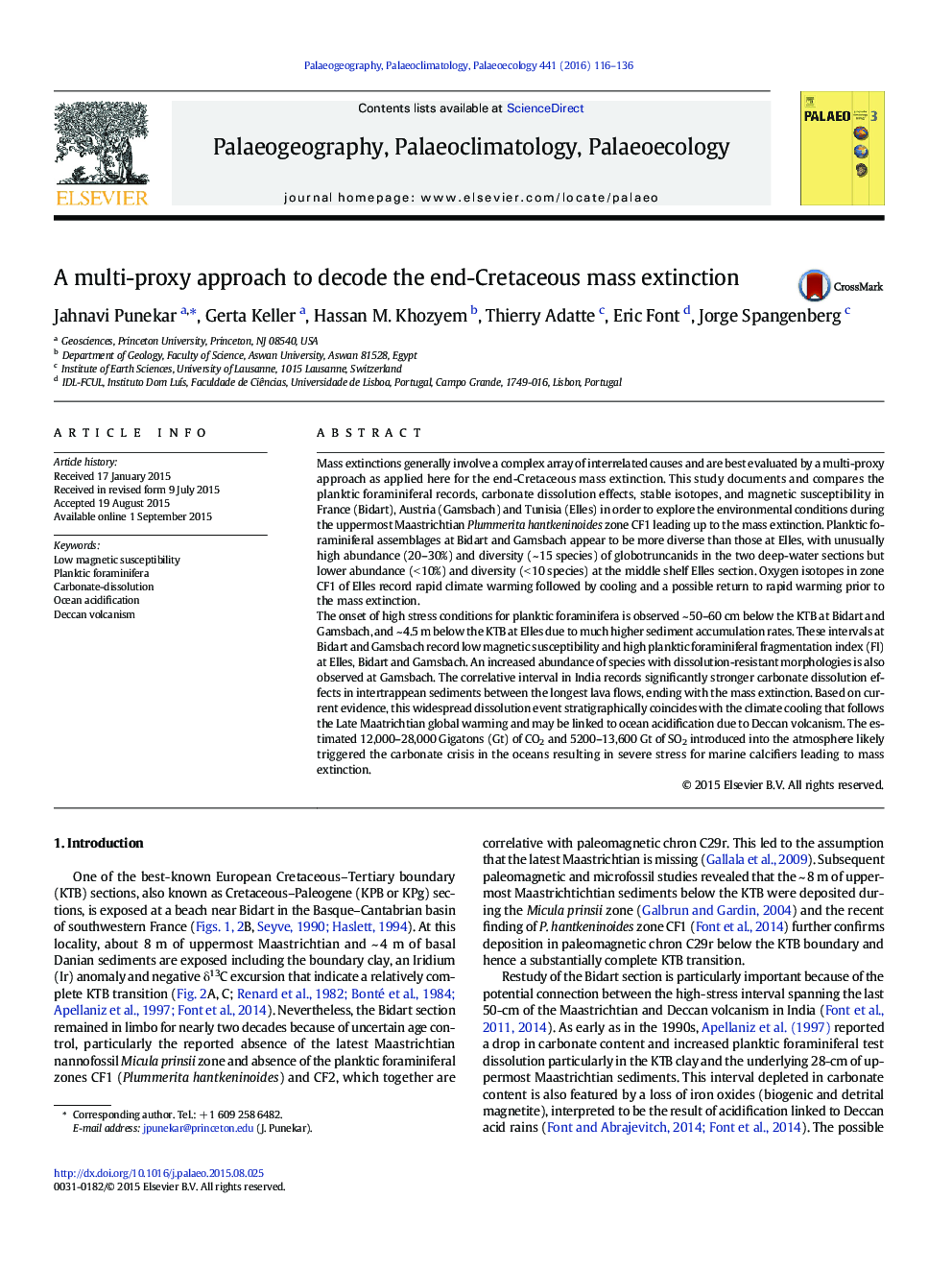| Article ID | Journal | Published Year | Pages | File Type |
|---|---|---|---|---|
| 6349277 | Palaeogeography, Palaeoclimatology, Palaeoecology | 2016 | 21 Pages |
â¢Plummerita hantkeninoides zone CF1 present in Bidart (France), Gamsbach (Austria)â¢Low MS Deccan benchmark coincides with a carbonate dissolution event at both sites.â¢Dissolution event immediately precedes the KTB mass extinction.â¢Ocean acidification may have resulted in carbonate crisis for planktic foraminifera.â¢Deccan volcanic main phase-2 may be the likely cause.
Mass extinctions generally involve a complex array of interrelated causes and are best evaluated by a multi-proxy approach as applied here for the end-Cretaceous mass extinction. This study documents and compares the planktic foraminiferal records, carbonate dissolution effects, stable isotopes, and magnetic susceptibility in France (Bidart), Austria (Gamsbach) and Tunisia (Elles) in order to explore the environmental conditions during the uppermost Maastrichtian Plummerita hantkeninoides zone CF1 leading up to the mass extinction. Planktic foraminiferal assemblages at Bidart and Gamsbach appear to be more diverse than those at Elles, with unusually high abundance (20-30%) and diversity (~Â 15 species) of globotruncanids in the two deep-water sections but lower abundance (<Â 10%) and diversity (<Â 10 species) at the middle shelf Elles section. Oxygen isotopes in zone CF1 of Elles record rapid climate warming followed by cooling and a possible return to rapid warming prior to the mass extinction.The onset of high stress conditions for planktic foraminifera is observed ~Â 50-60Â cm below the KTB at Bidart and Gamsbach, and ~Â 4.5Â m below the KTB at Elles due to much higher sediment accumulation rates. These intervals at Bidart and Gamsbach record low magnetic susceptibility and high planktic foraminiferal fragmentation index (FI) at Elles, Bidart and Gamsbach. An increased abundance of species with dissolution-resistant morphologies is also observed at Gamsbach. The correlative interval in India records significantly stronger carbonate dissolution effects in intertrappean sediments between the longest lava flows, ending with the mass extinction. Based on current evidence, this widespread dissolution event stratigraphically coincides with the climate cooling that follows the Late Maatrichtian global warming and may be linked to ocean acidification due to Deccan volcanism. The estimated 12,000-28,000Â Gigatons (Gt) of CO2 and 5200-13,600Â Gt of SO2 introduced into the atmosphere likely triggered the carbonate crisis in the oceans resulting in severe stress for marine calcifiers leading to mass extinction.
